Why you can trust Tom's Hardware
AMD Ryzen 5 5600G Application Benchmarks, the TLDR
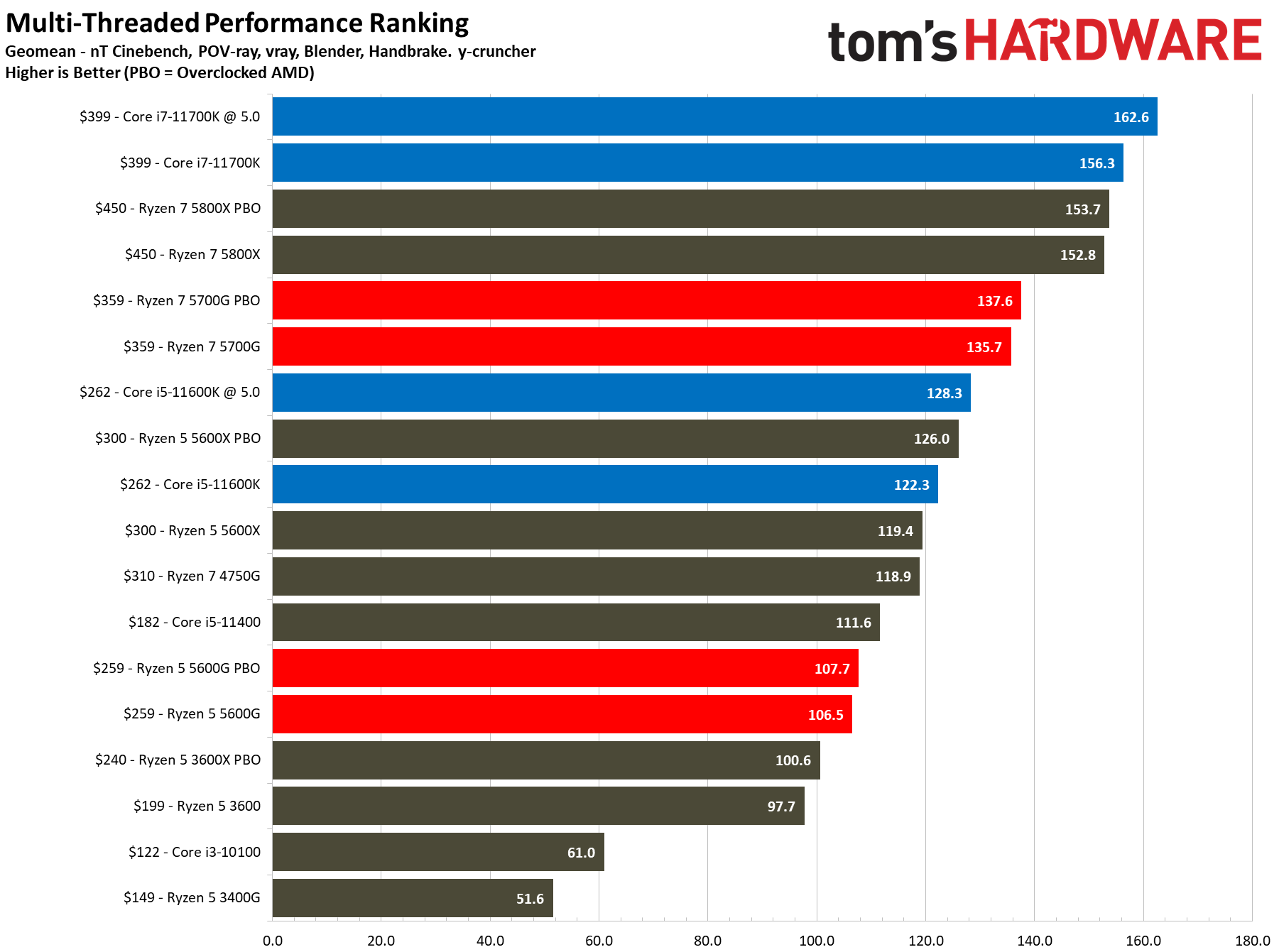

The charts above provide the geometric mean of several of our application tests (listed in the chart title), representing broader trends in lightly- and multi-threaded applications. Be sure to check our application tests below for performance in specific types of applications. To maintain consistency within our test pool, we conducted all of the tests below with a discrete graphics card handling the display output.
| Row 0 - Cell 0 | Single-Threaded | Multi-Threaded |
| Core i7-11700K 8C/16T | 100% | 100% |
| Ryzen 7 5800X 8C/16T | 98.5% | 97.8% |
| Ryzen 7 5700G 8C/16T | 94.3% | 86.8% |
| Ryzen 5 5600X 6C/12T | 94.6% | 76.4% |
| Core i5-11600K 6C/12T | 98.2% | 78.3% |
| Ryzen 5 5600G | 90.9% | 68.1% |
| Core i5-11400 | 88.1% | 71.4% |
| Ryzen 7 4750G 8C/16T | 81.9% | 76.1% |
| Ryzen 5 3400G 4C/8T | 68.8% | 33.0% |
As expected, the eight-core Ryzen 7 5700G is faster than its less-expensive six-core 5600G counterpart, by roughly 27% in our aggregate measurement of threaded workloads, meaning it's better suited for CPU-heavy applications. The 5700G also holds a slight edge in single-threaded work, with a 4% lead in our cumulative measure.
The Ryzen 5 5600G benefits heavily from its Zen 3 architecture, though, so it is faster in lightly-threaded work than its predecessors, the Ryzen 7 4750G and Ryzen 5 3400G. The 4750G, however, still holds a two-core advantage, which equates to 12% more performance in threaded workloads. Conversely, the Ryzen 5 5600G is 9% faster in threaded work than its six-core graphics-less counterpart, the Ryzen 5 3600.
The six-core $259 5600G lags the $300 six-core 5600X in both single- and multi-threaded work. These performance deltas are expected, due to the differences between the multi-die and monolithic designs, including different cache allocations and thermal characteristics.
The like-priced Core i5-11600K is 8% faster in lightly-threaded and 15% faster in multi-threaded work than the 5600G, but you lose the benefits of the Vega graphics engine, so that isn't the best comparison.
Rendering Benchmarks on AMD Ryzen 5 5600G
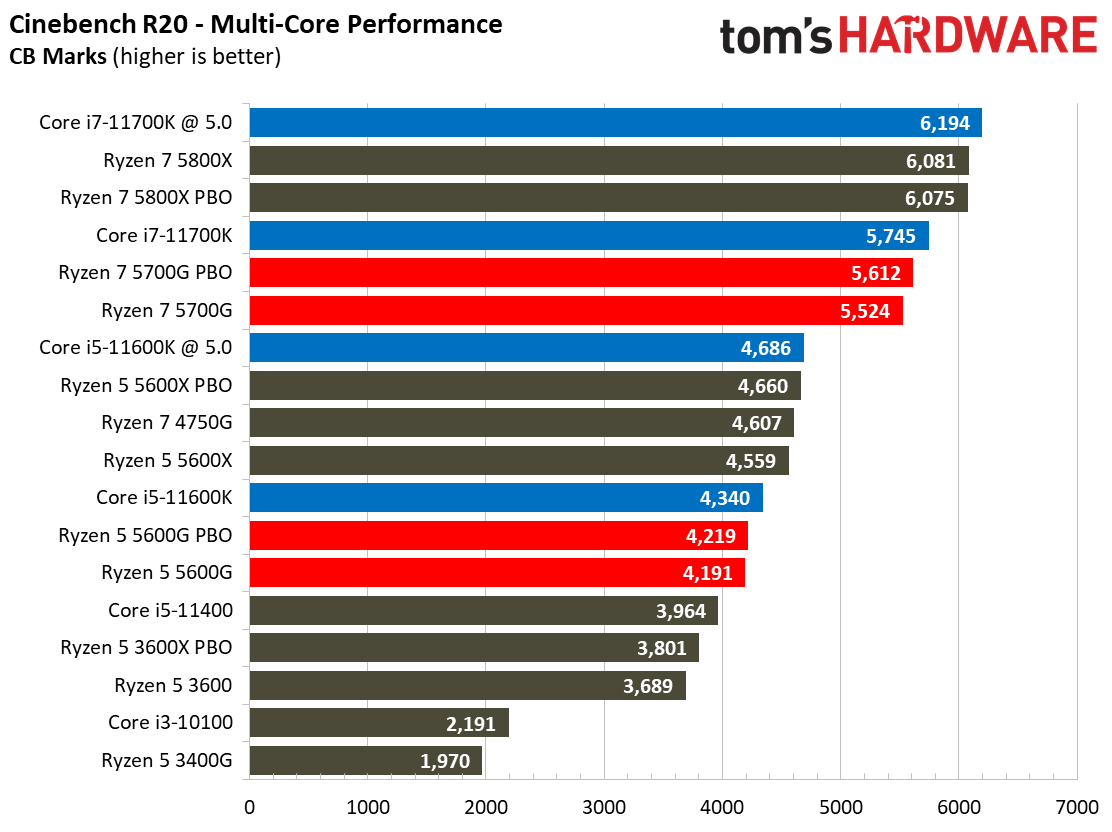
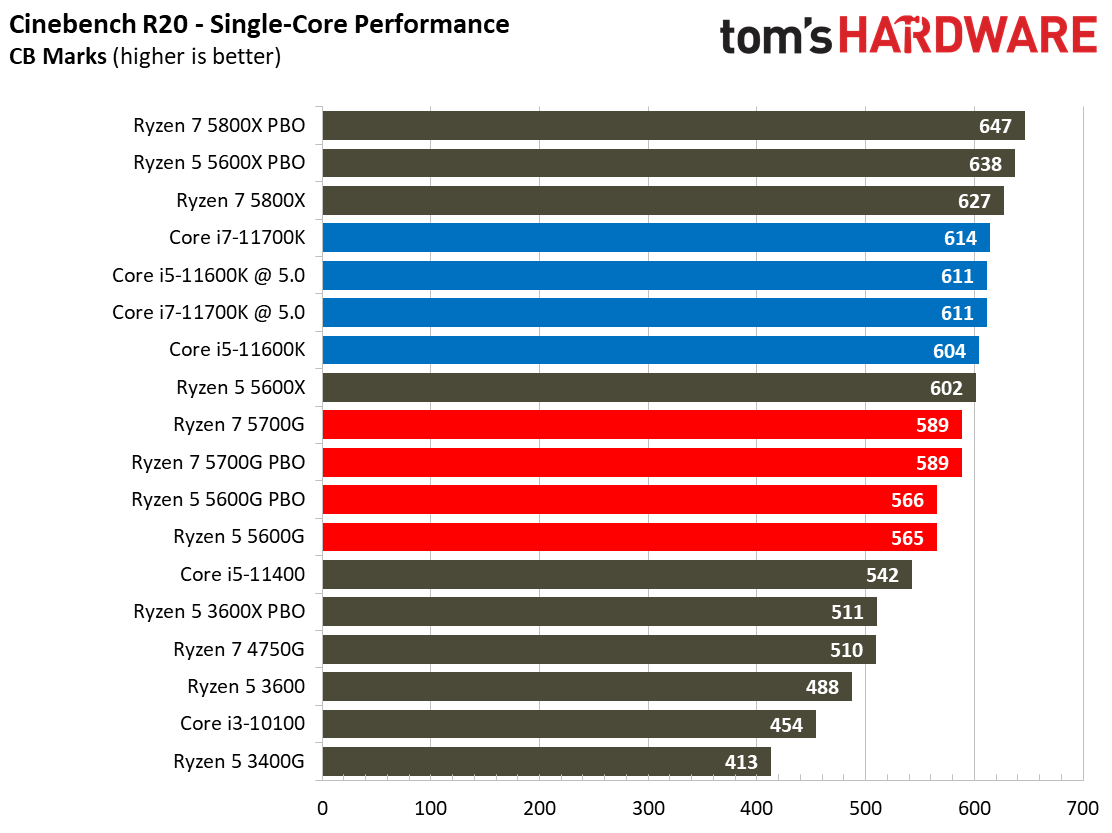

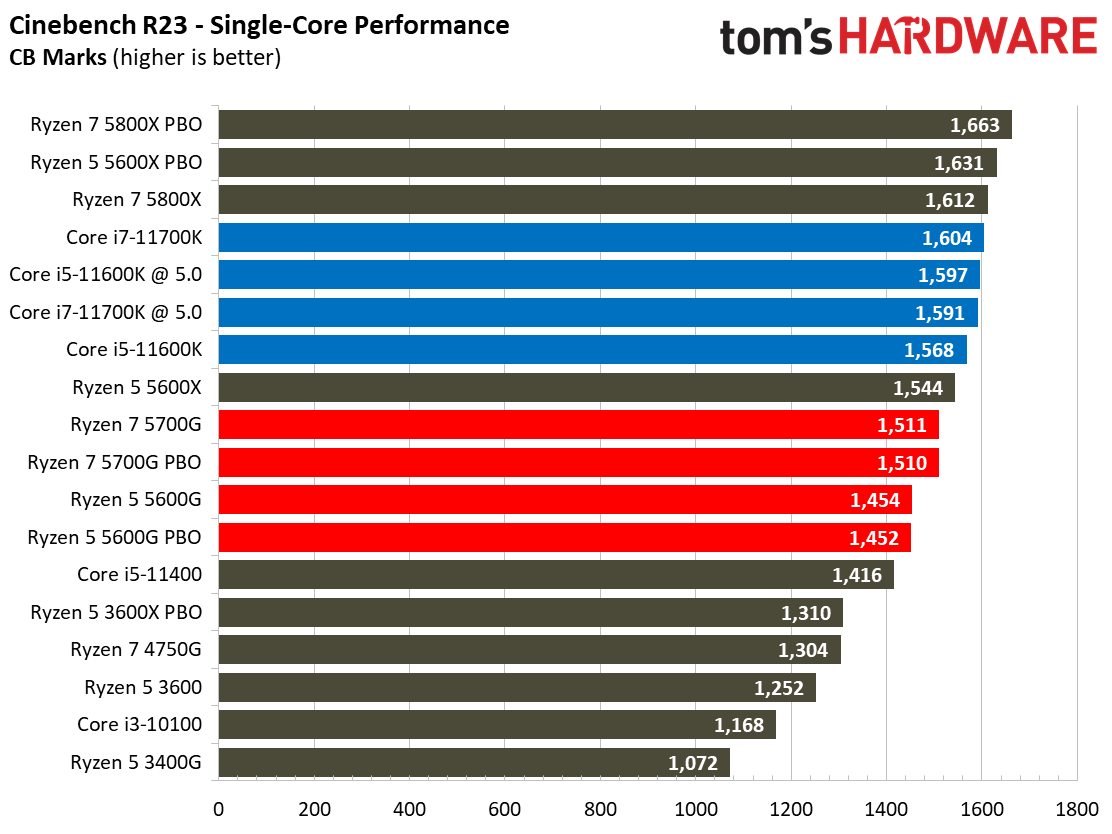

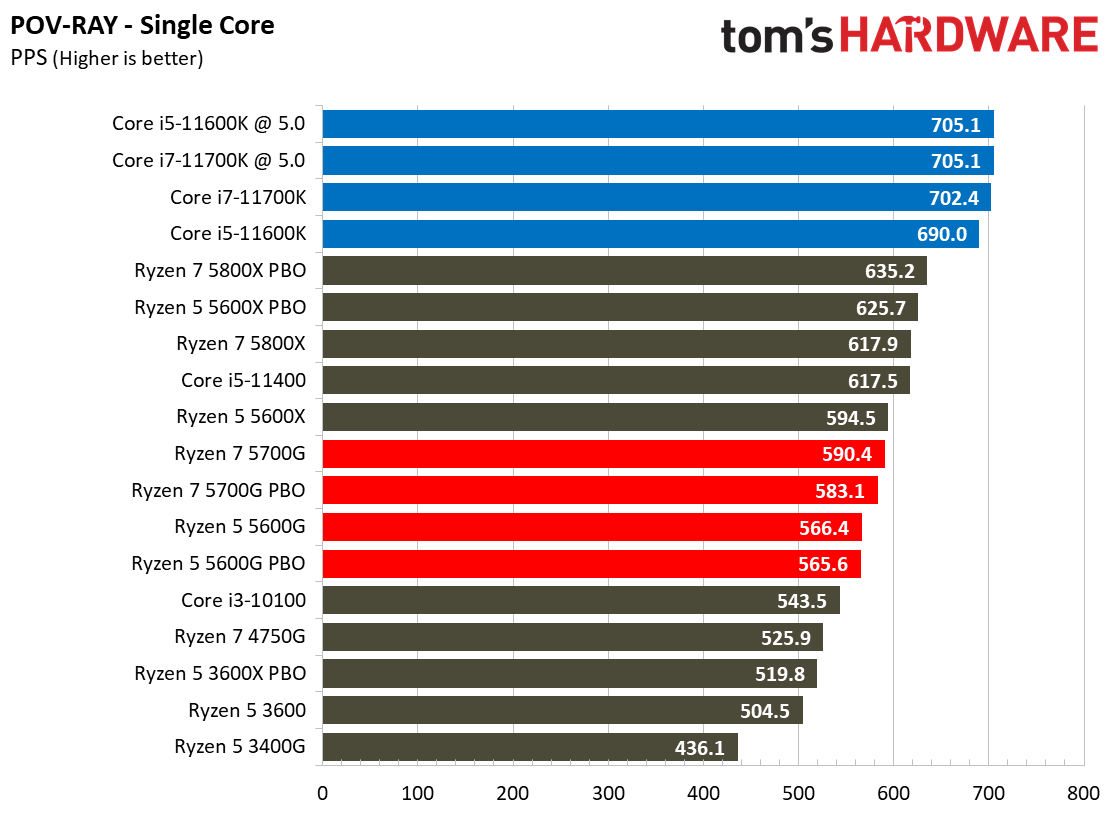
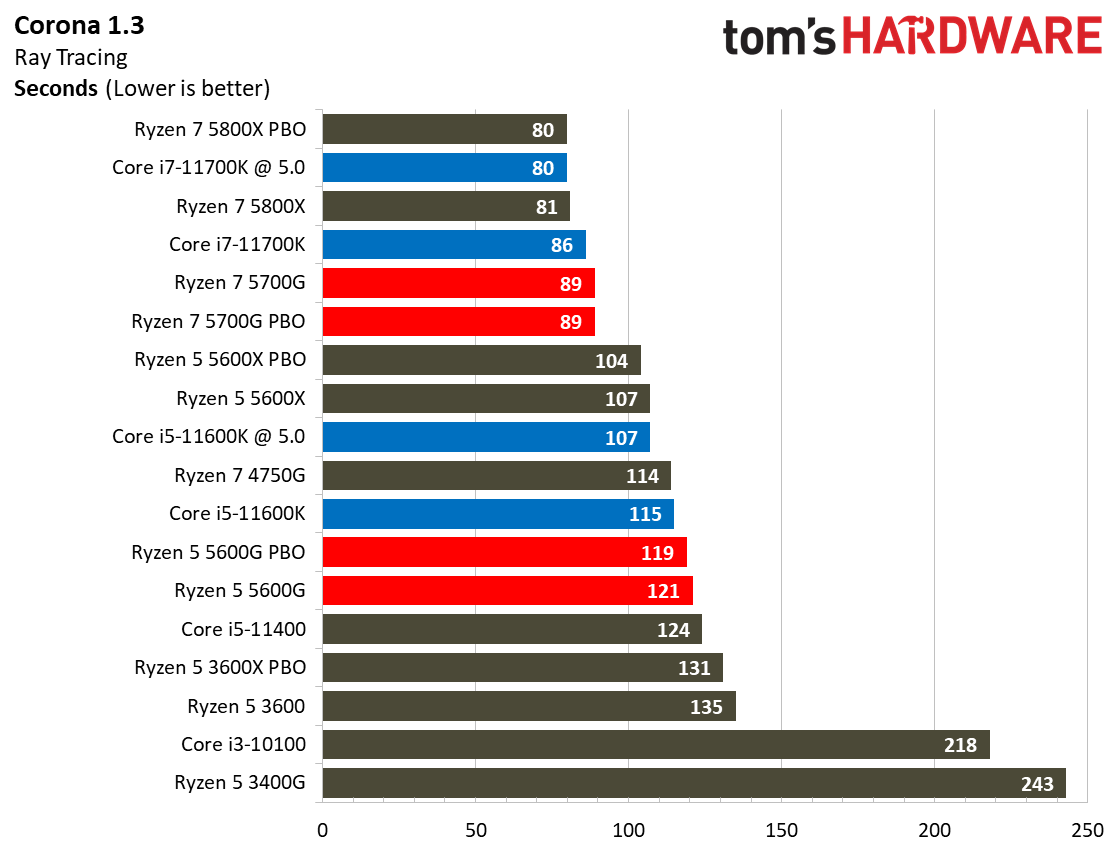
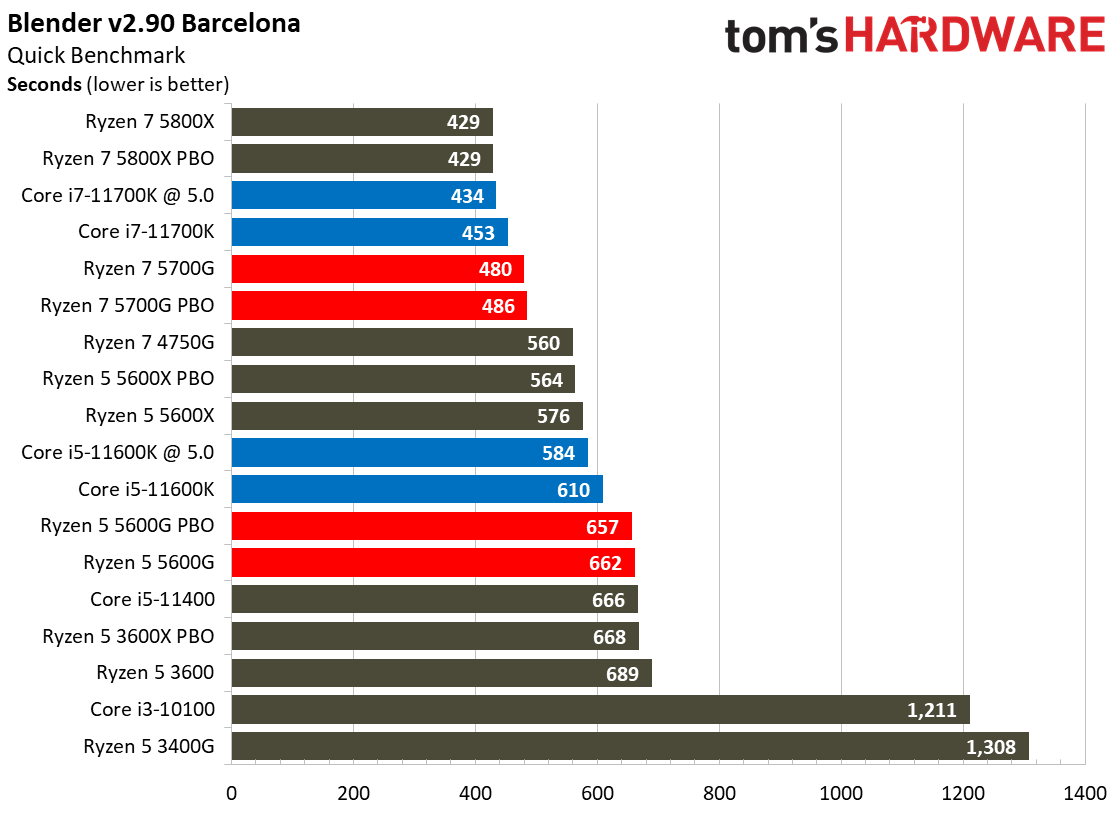
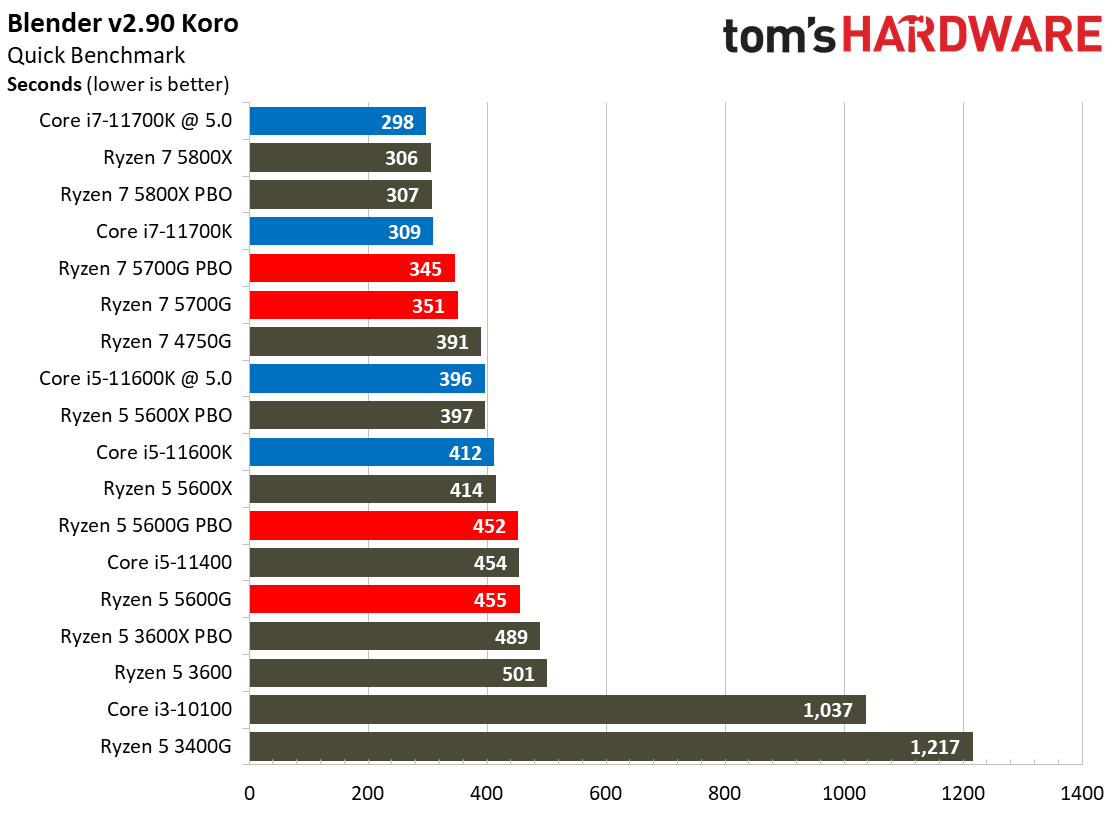
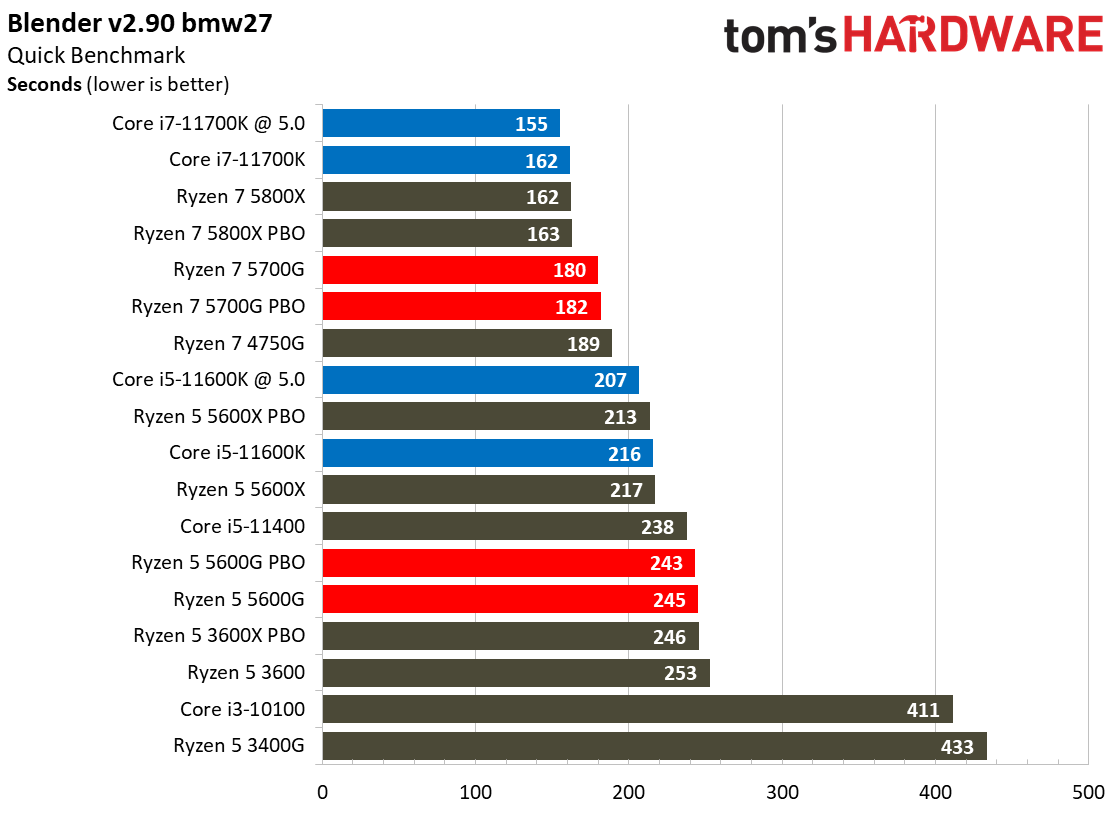
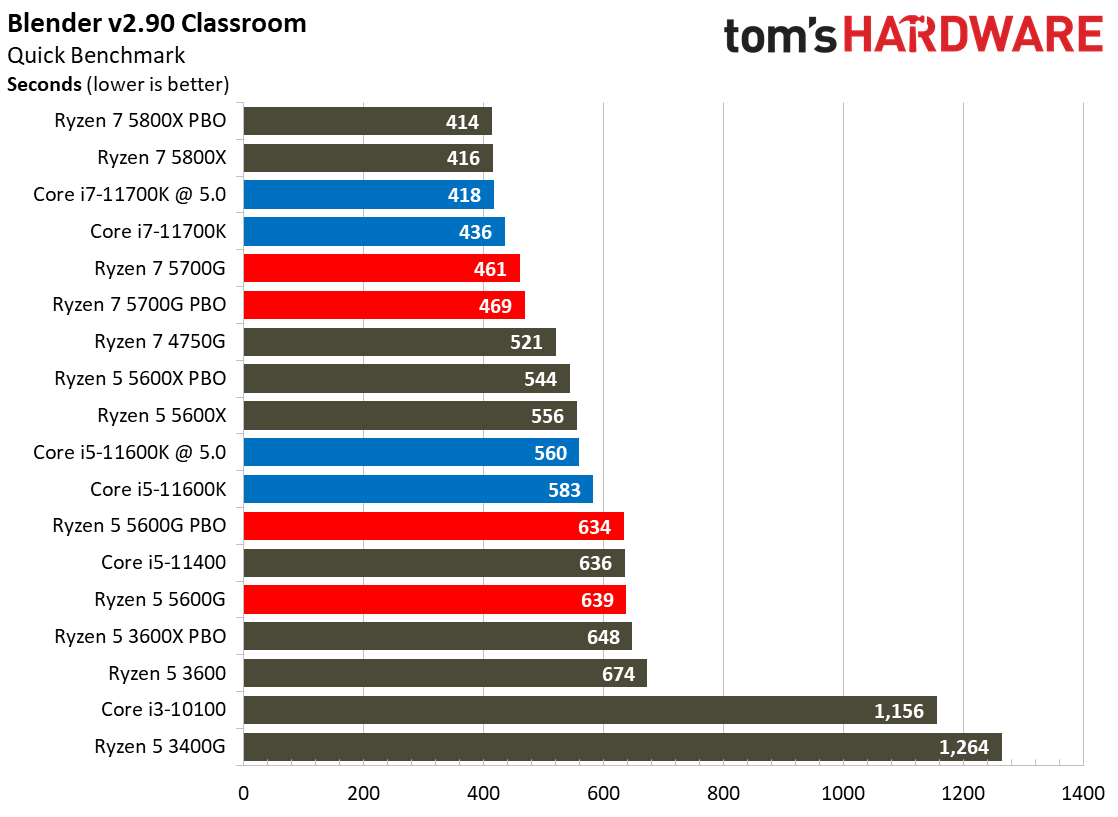
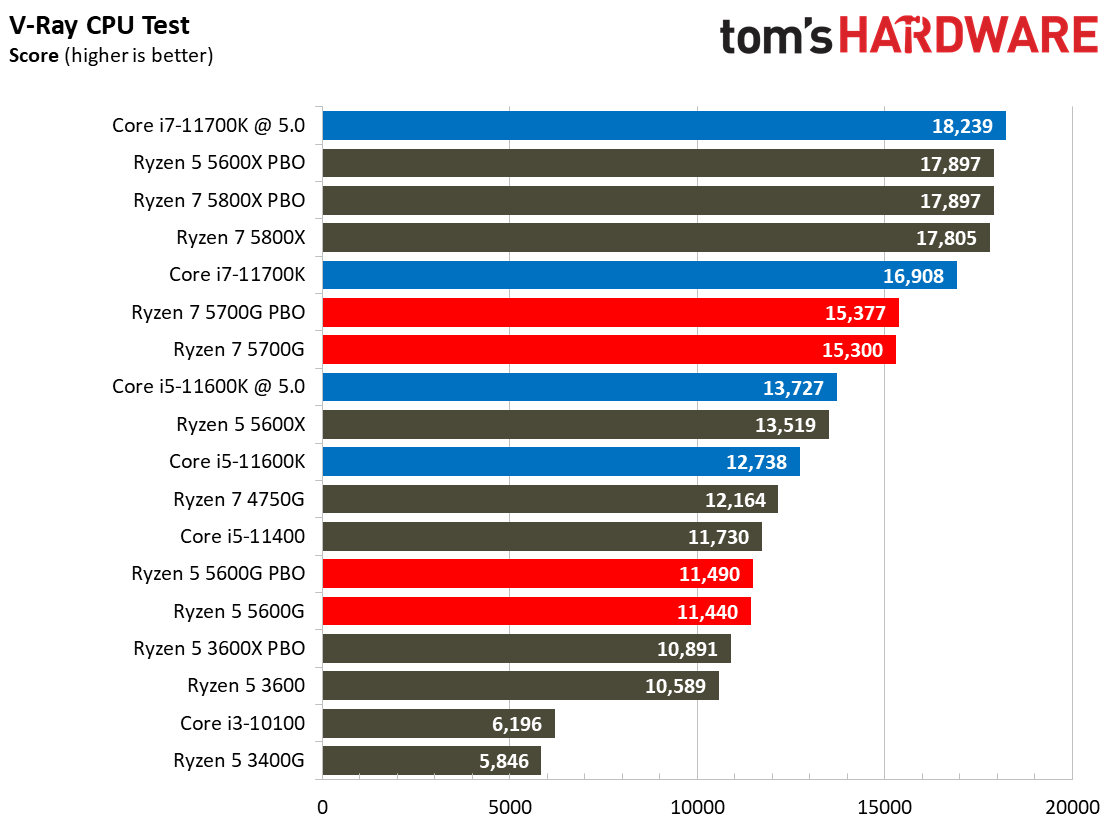
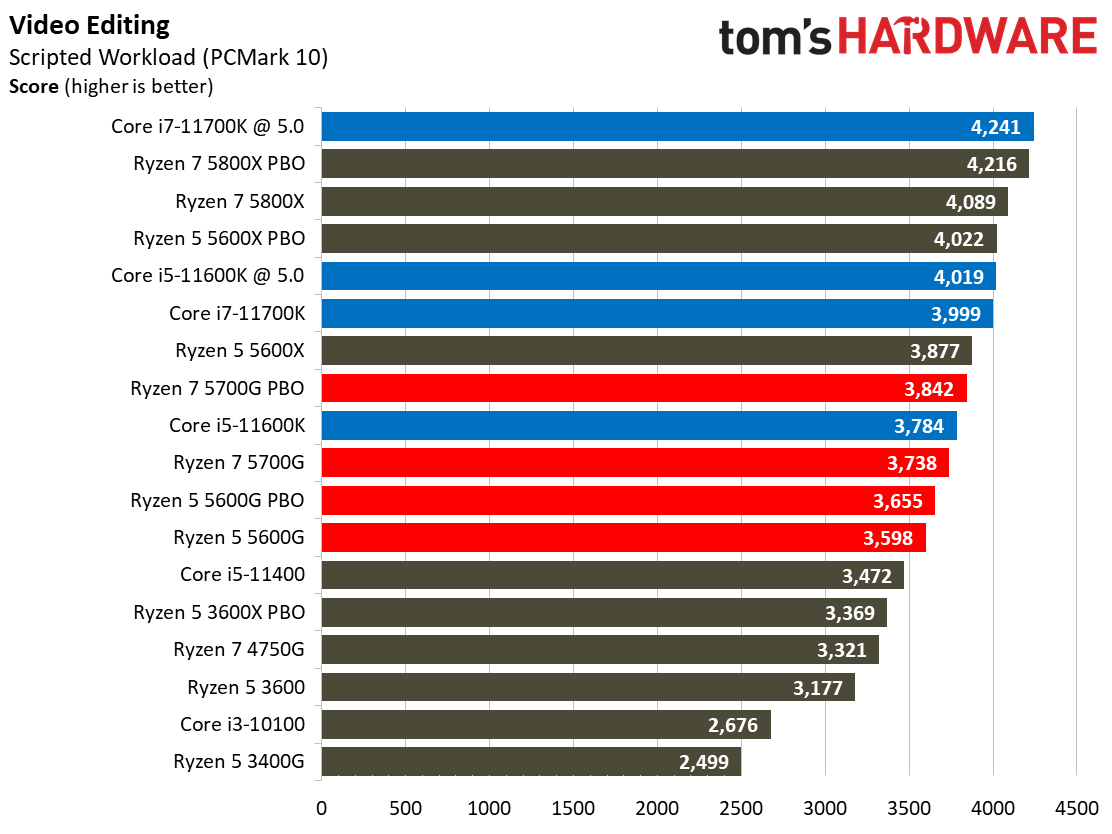

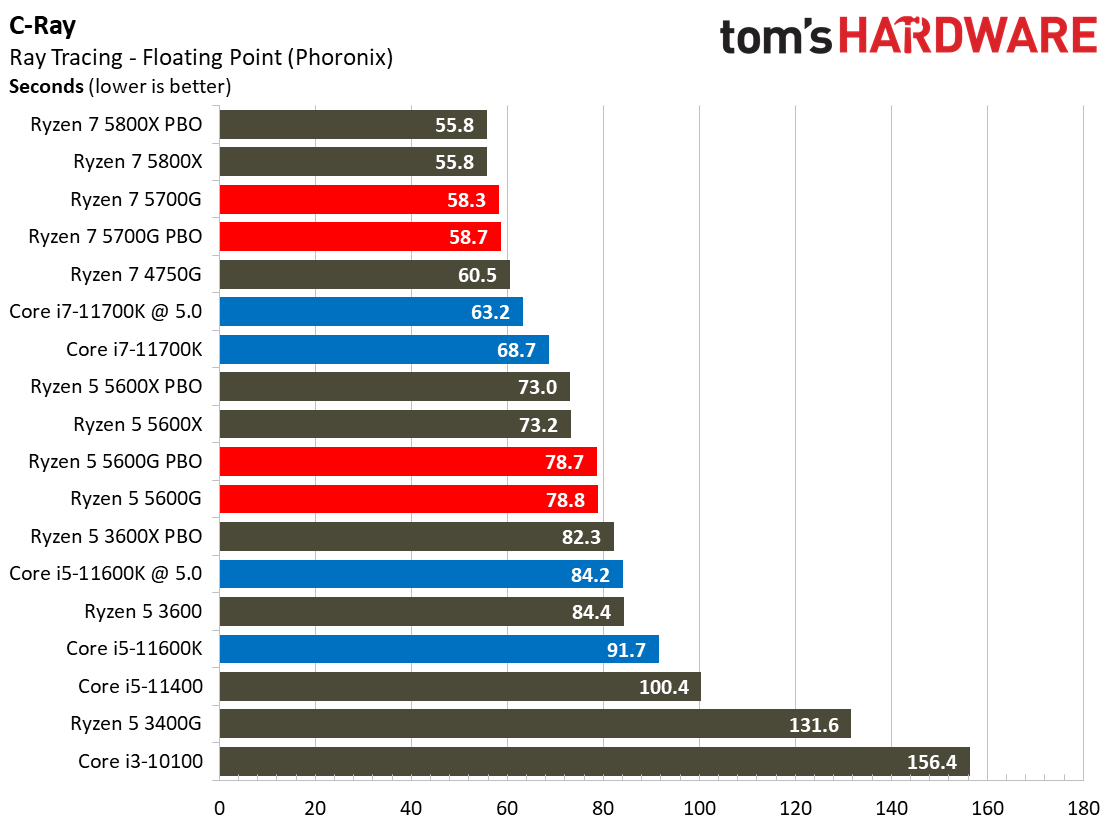
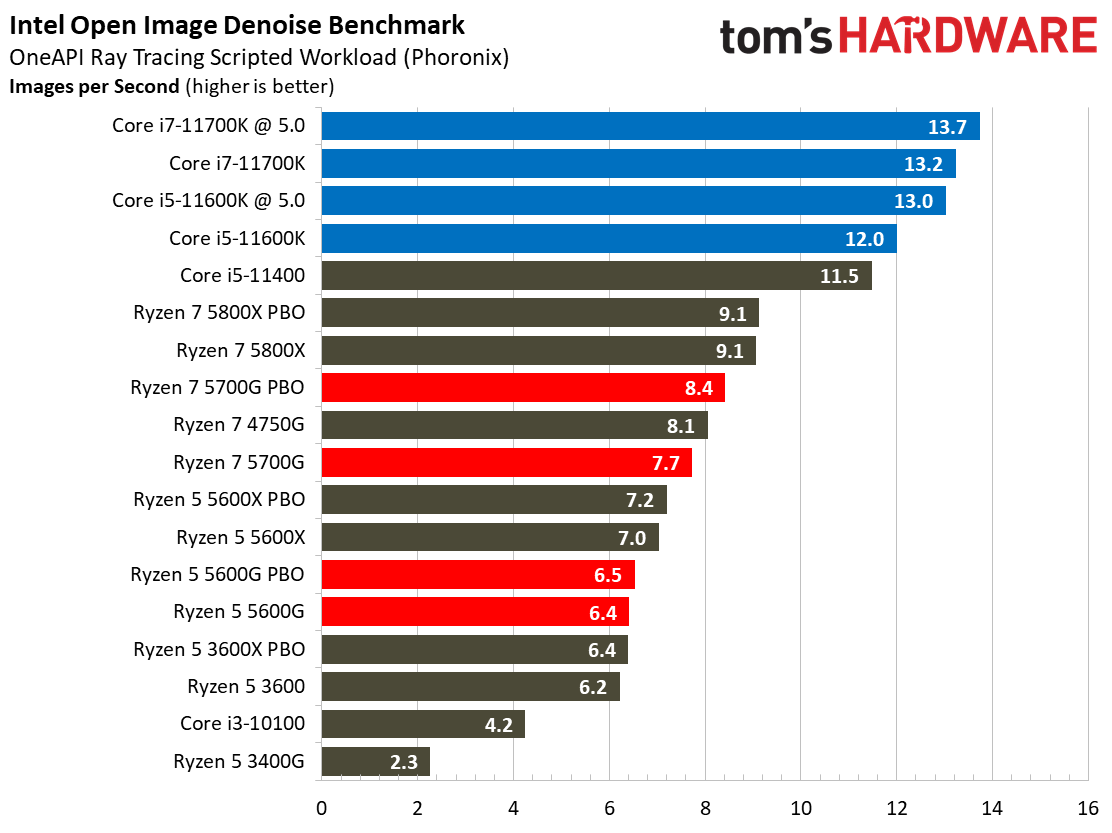
Remember, the Ryzen 5 3400G is the only APU available at retail. The chip trails its more modern counterparts by massive margins in almost all of these threaded workloads, underlining that Cezanne is a massive step forward in terms of AMD's widely available silicon.
Encoding Benchmarks on AMD Ryzen 5 5600G
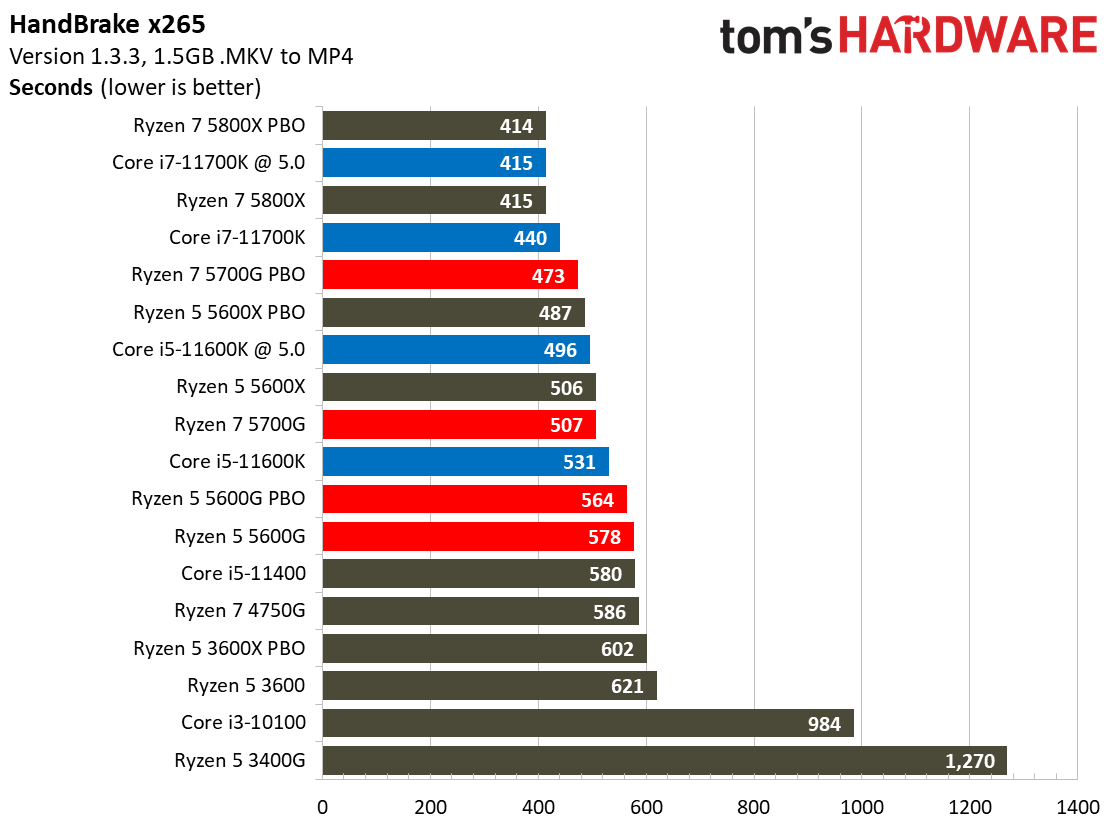

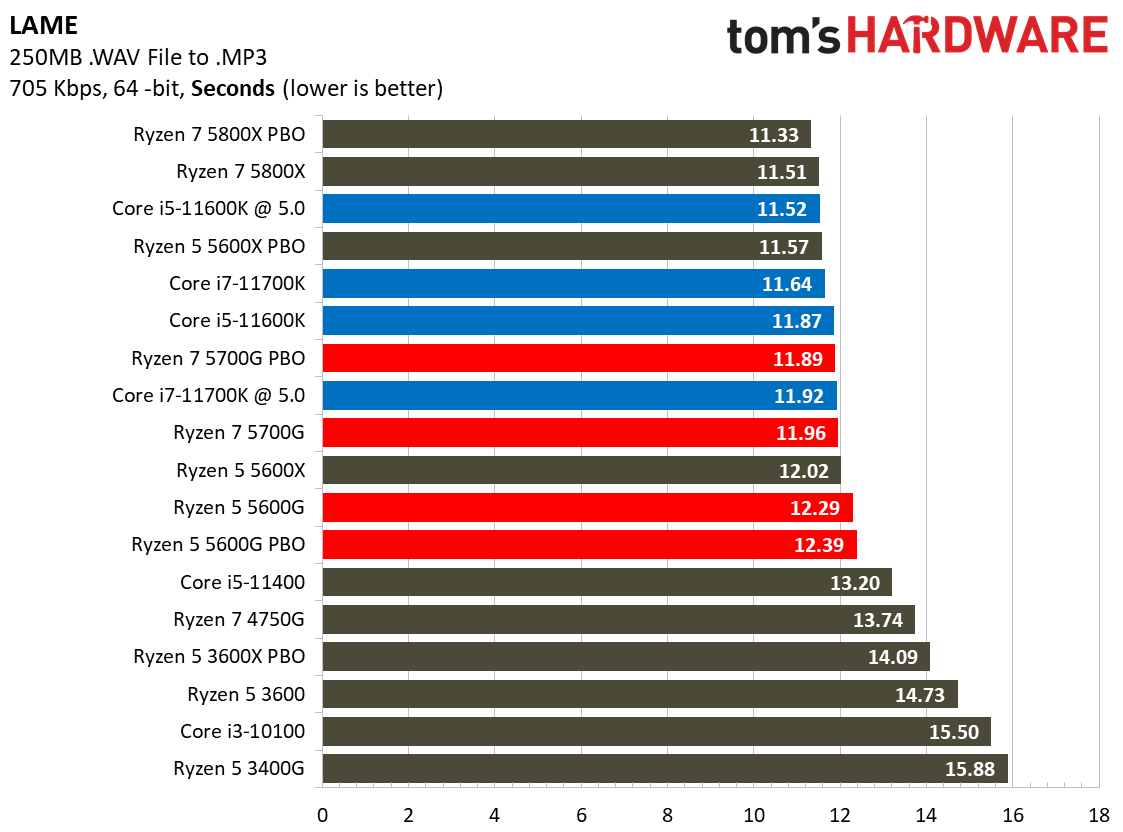


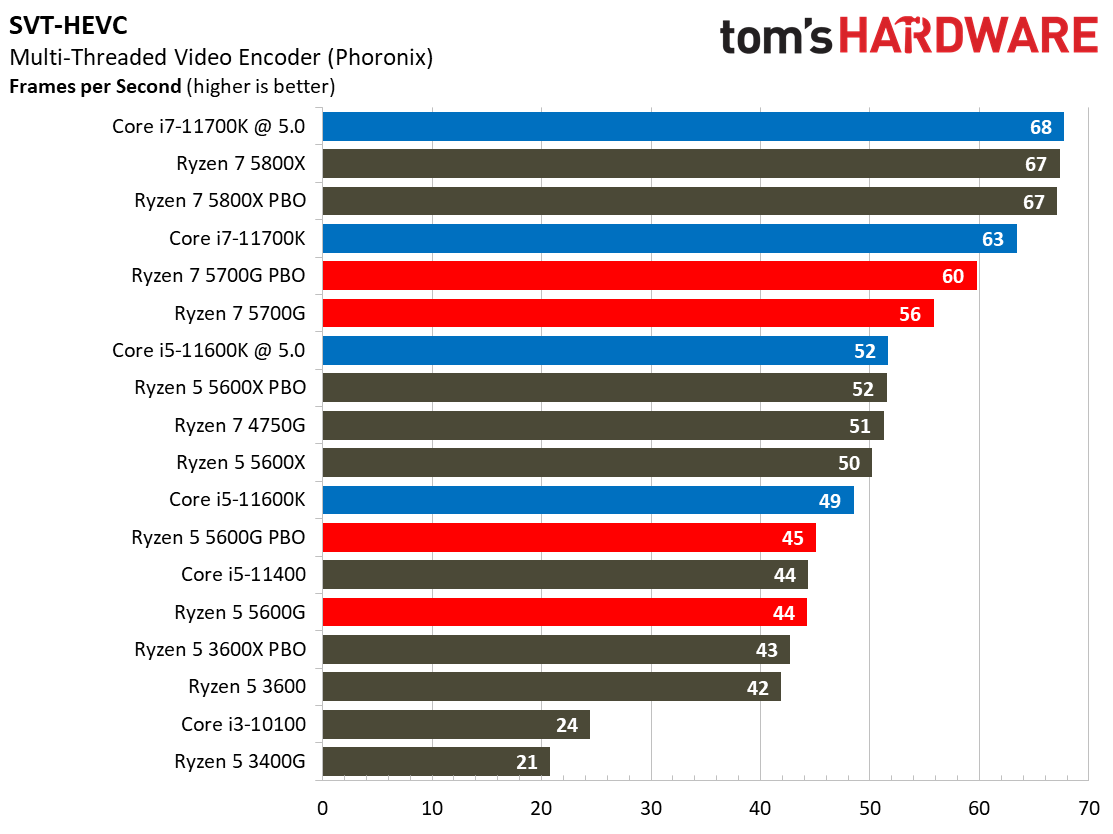
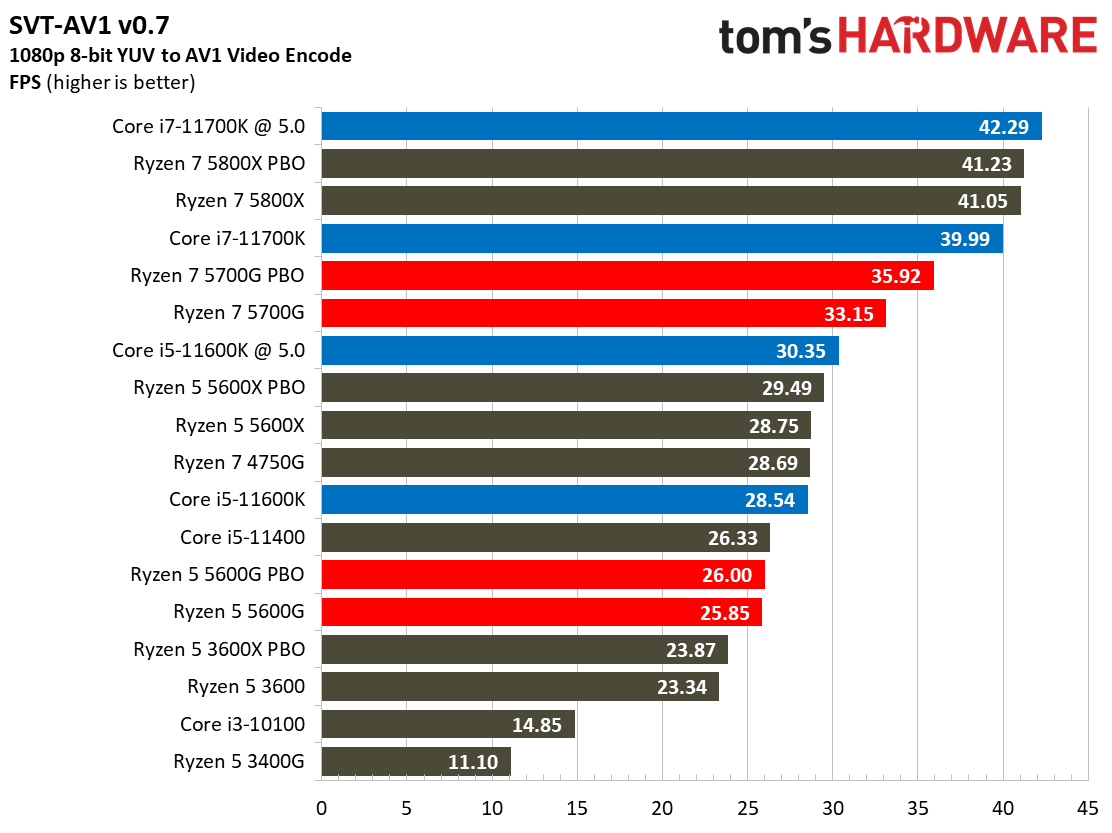
Our encoding tests include benchmarks that respond best to single-threaded performance, like the quintessential LAME and FLAC examples, but the SVT-AV1 and SVT-HEVC tests represent a newer class of threaded encoders.
Get Tom's Hardware's best news and in-depth reviews, straight to your inbox.
Web Browser, Office and Productivity on AMD Ryzen 5 5600G
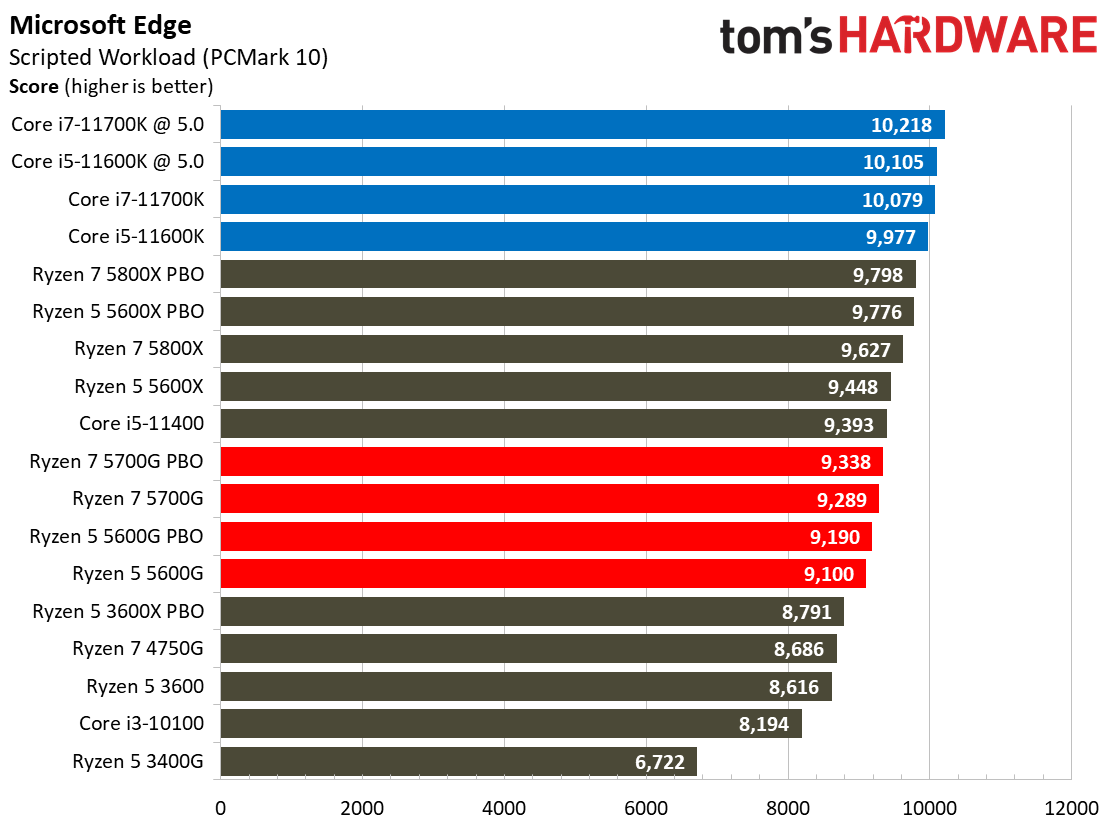

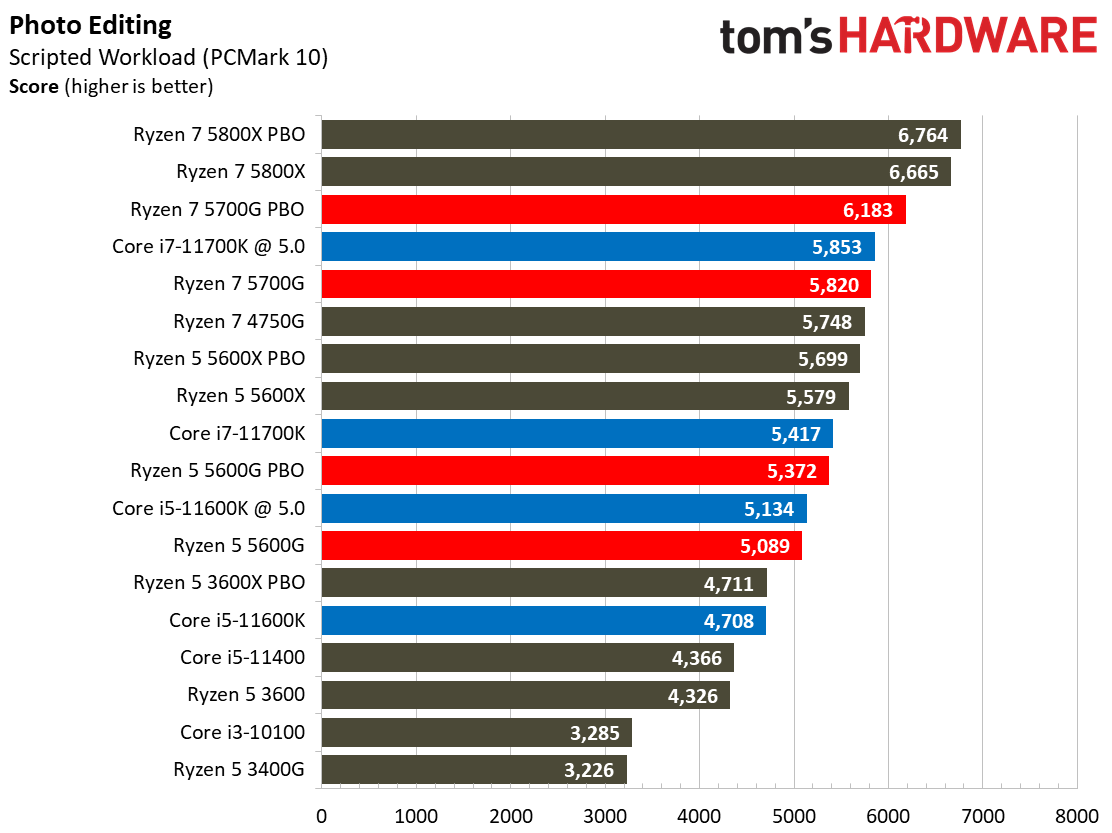


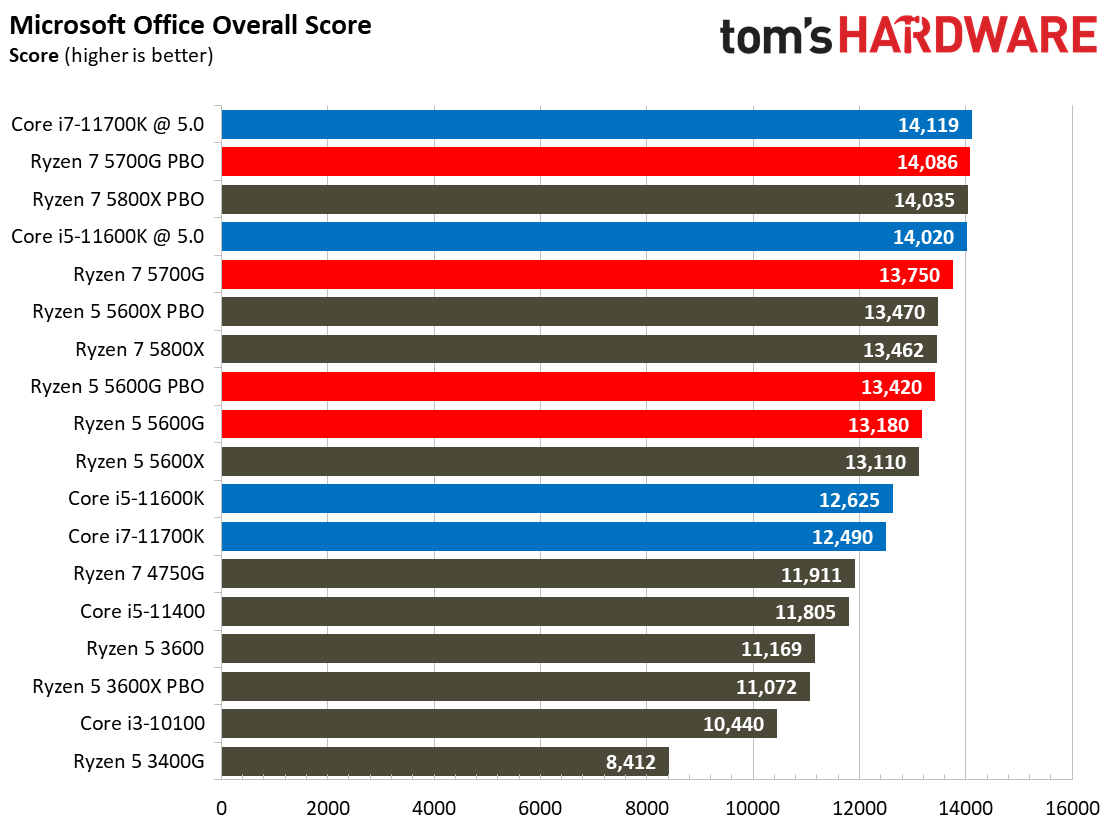
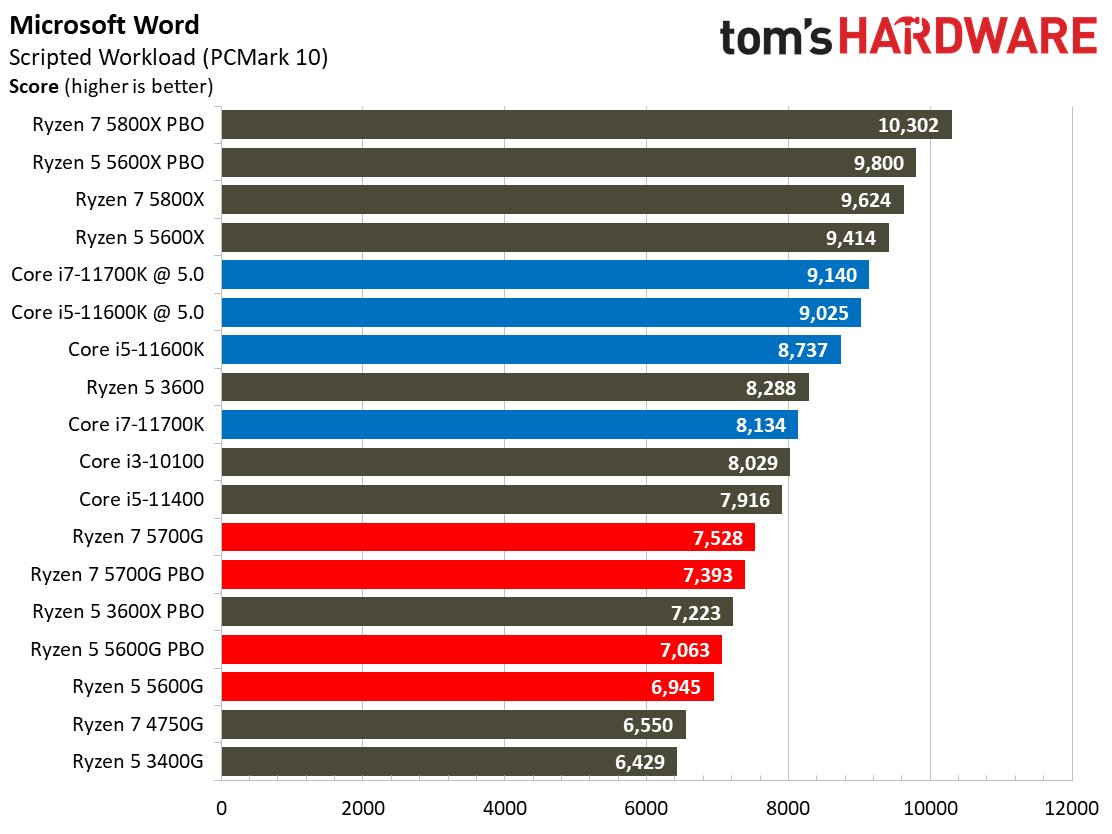
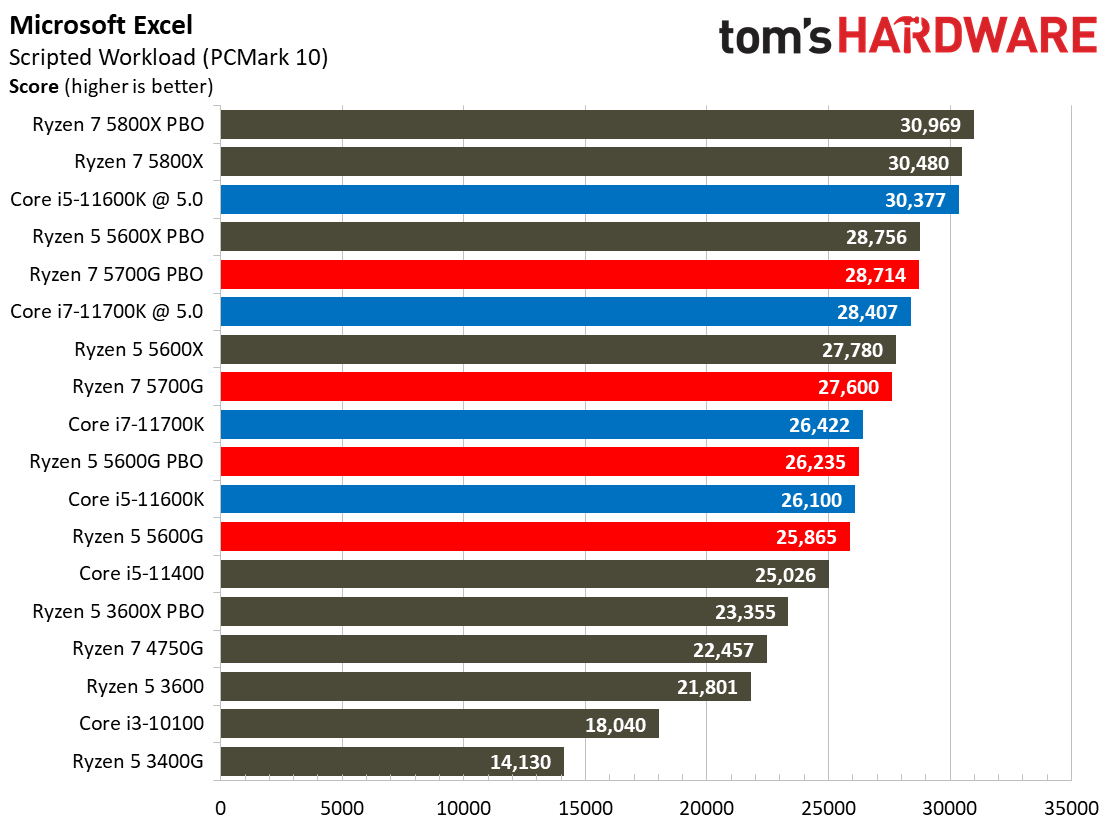
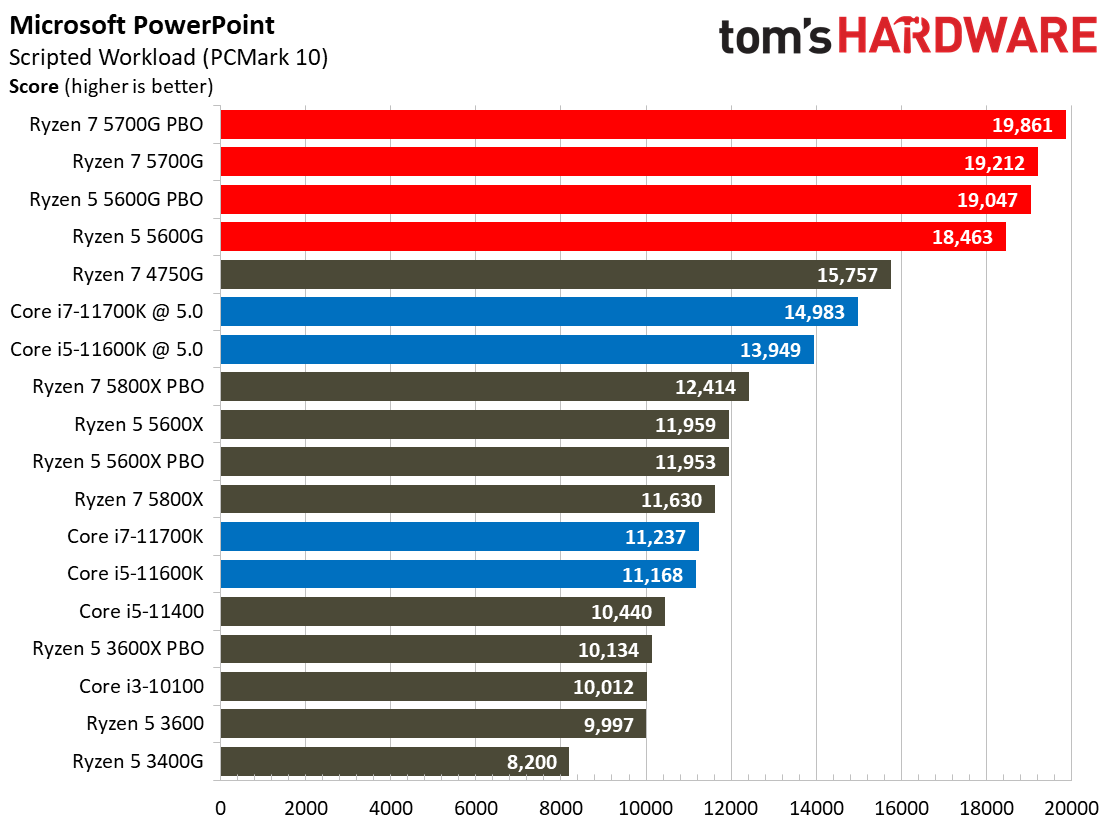
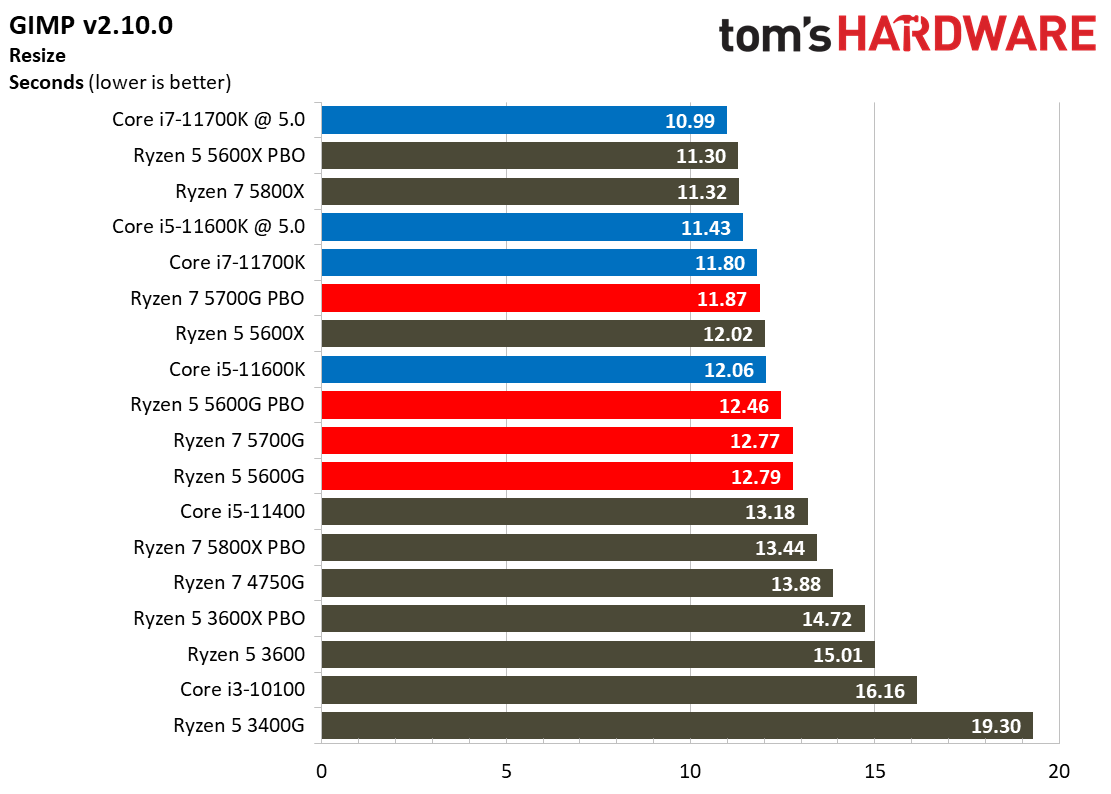



Yet another Chrome update has broken out automated web browser benchmarks, and we're working to address that issue. That leaves us with PC Mark 10's built-in Edge test to quantify performance, but be aware that this test responds more to threading than any other type of web browser benchmark.
Compilation, Compression, AVX Performance on AMD Ryzen 5 5600G
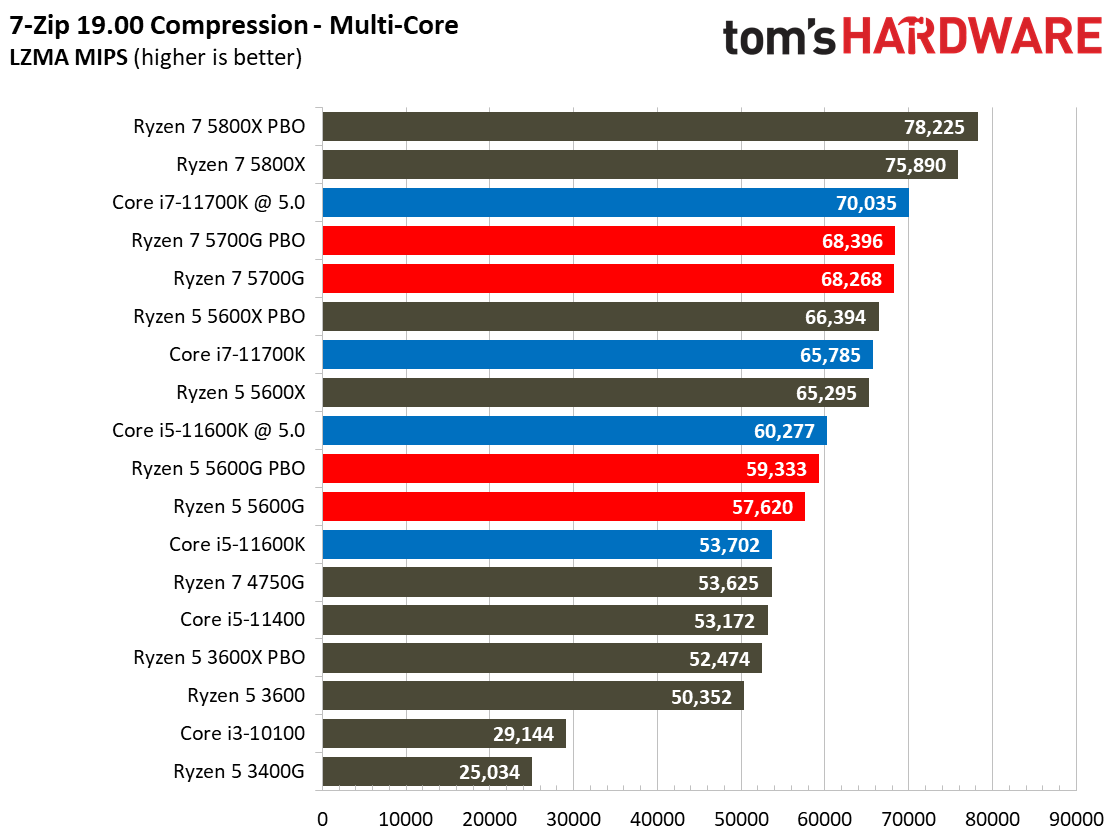
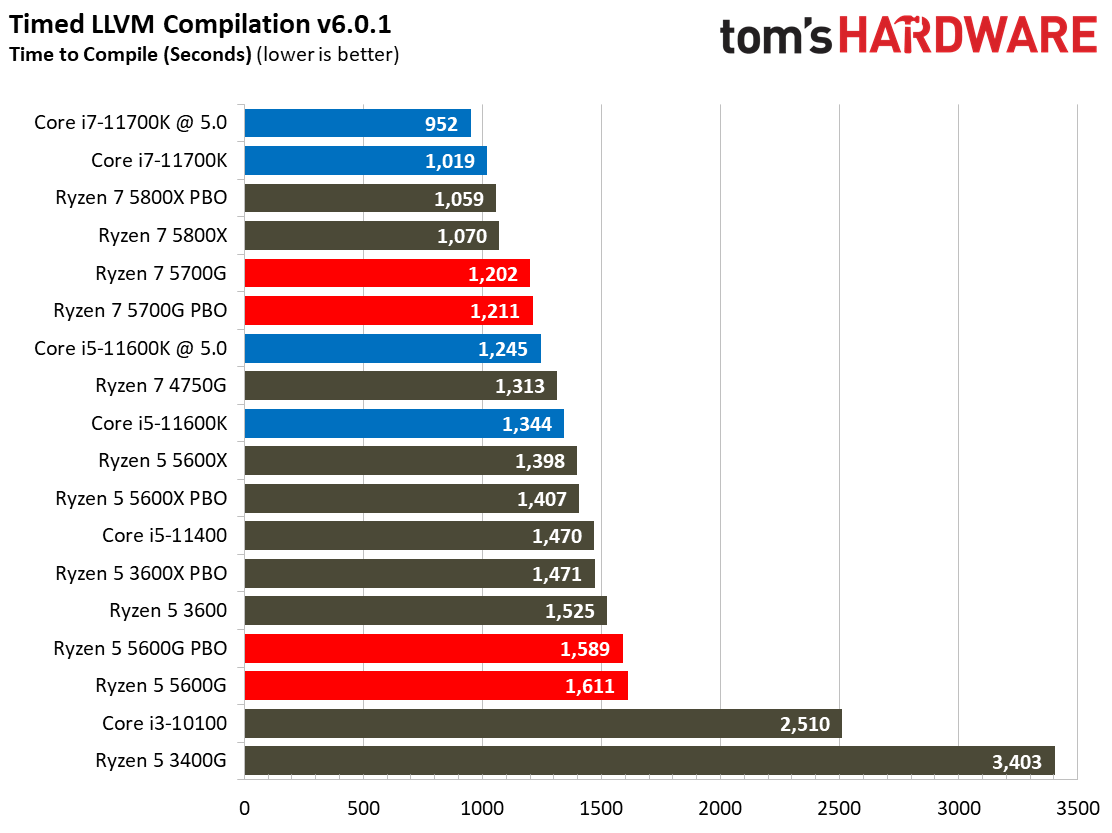

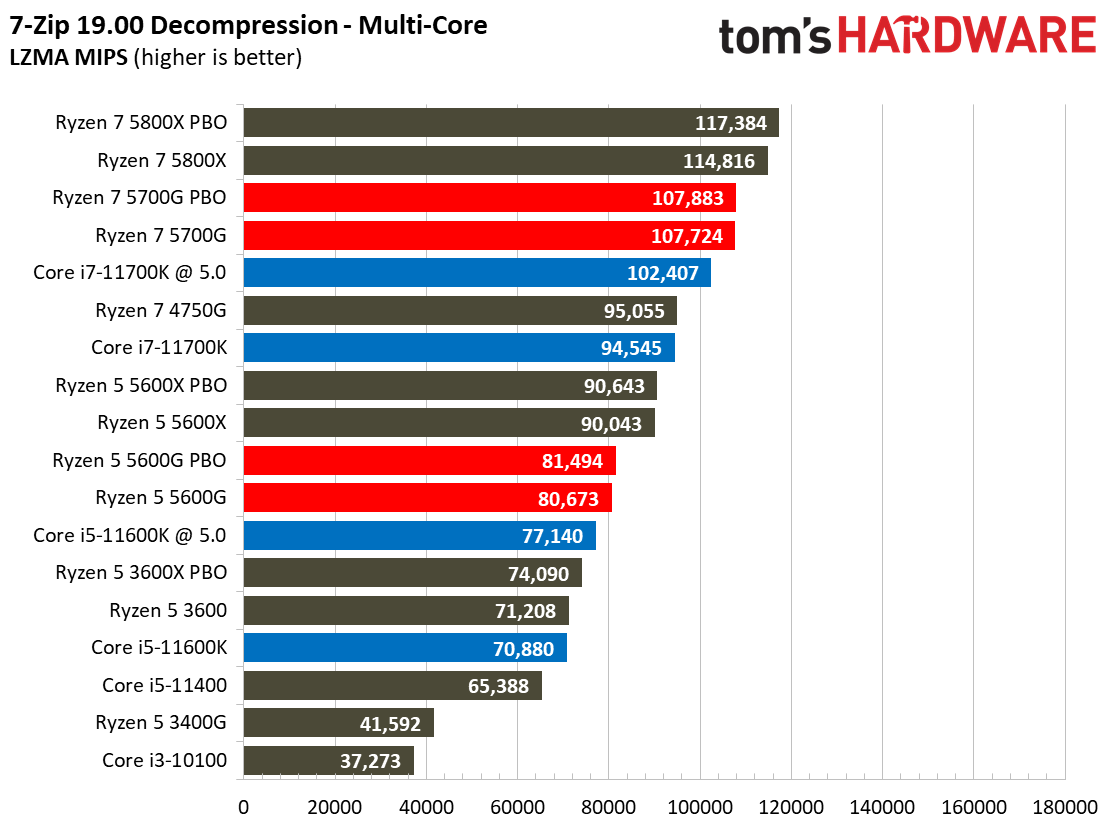
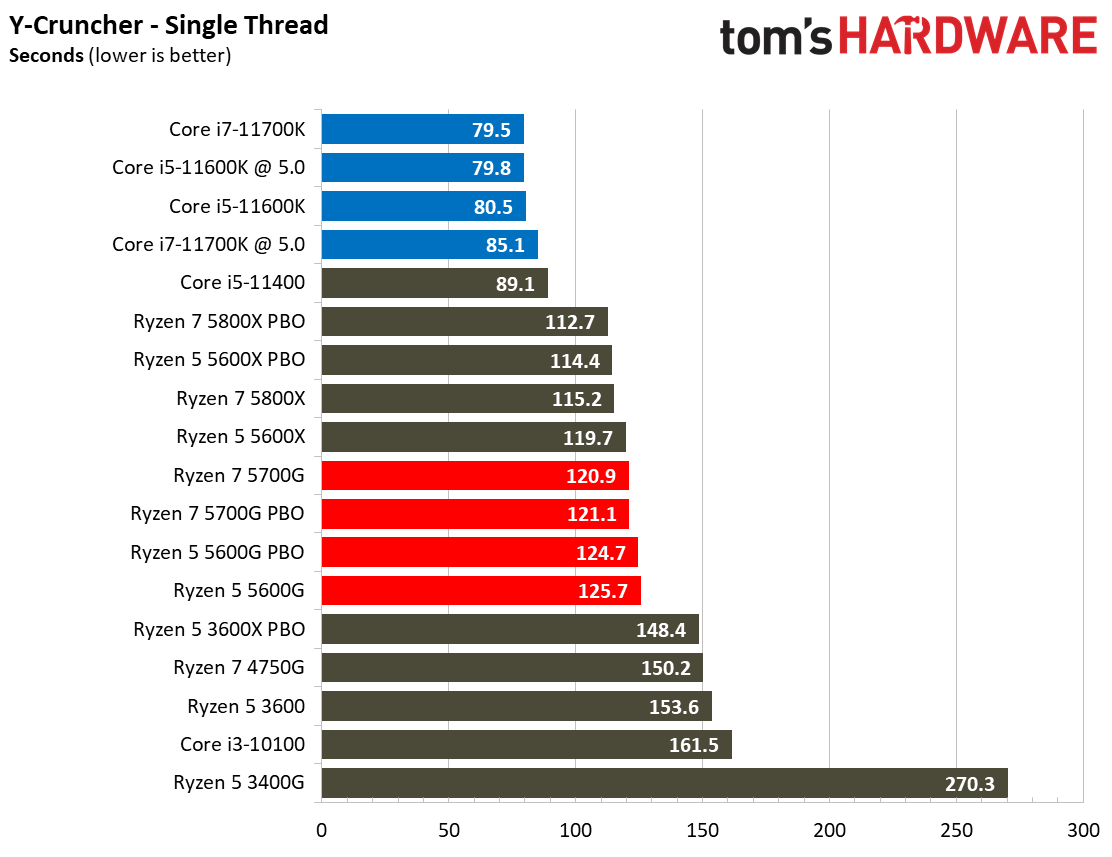
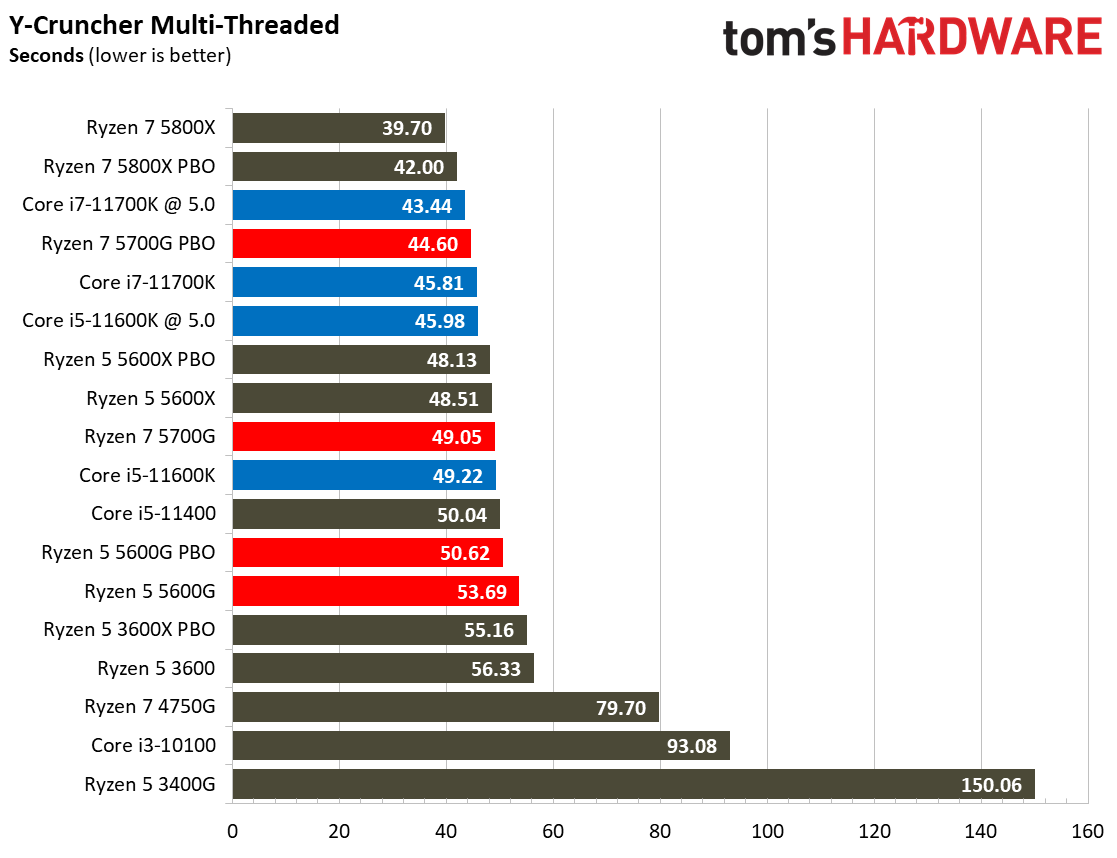



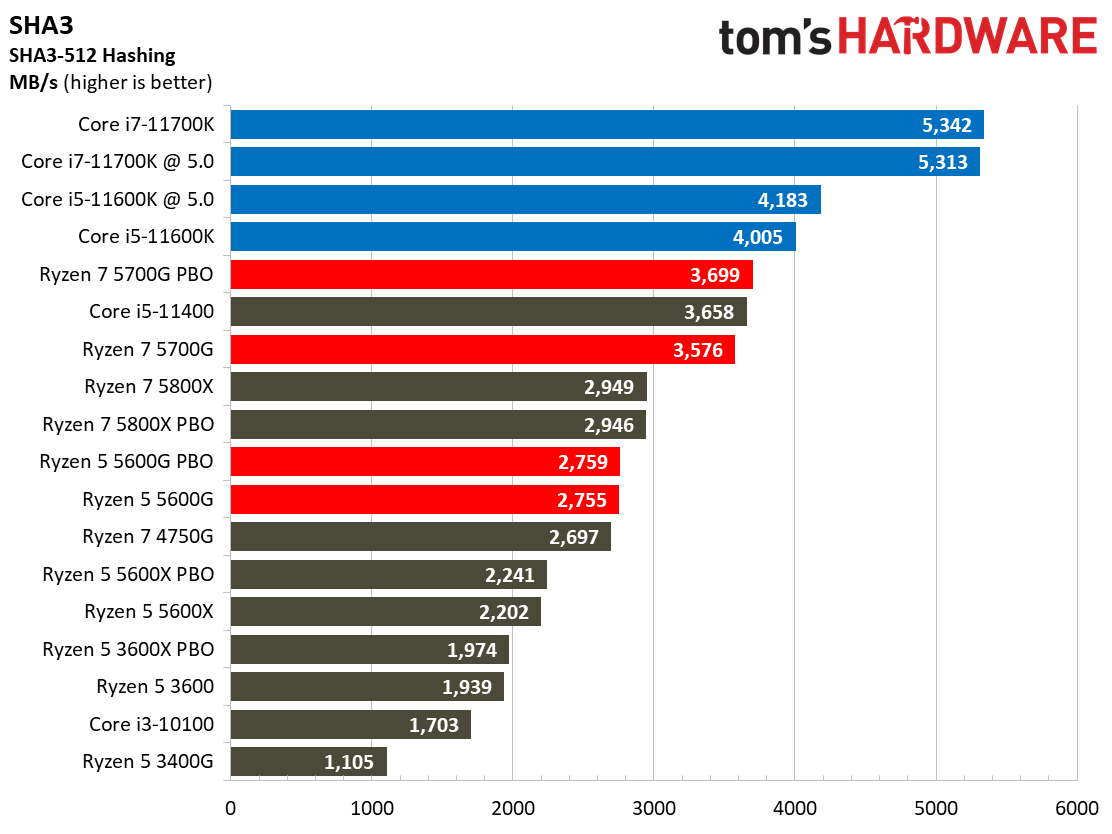
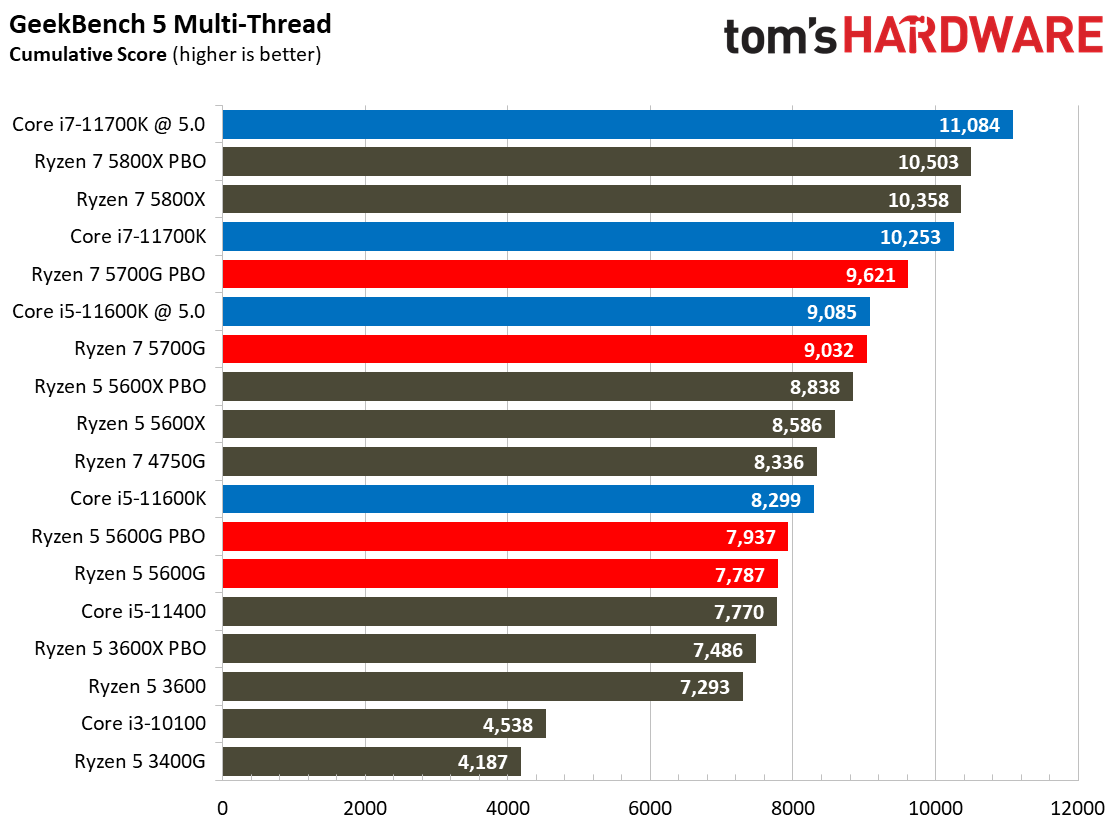

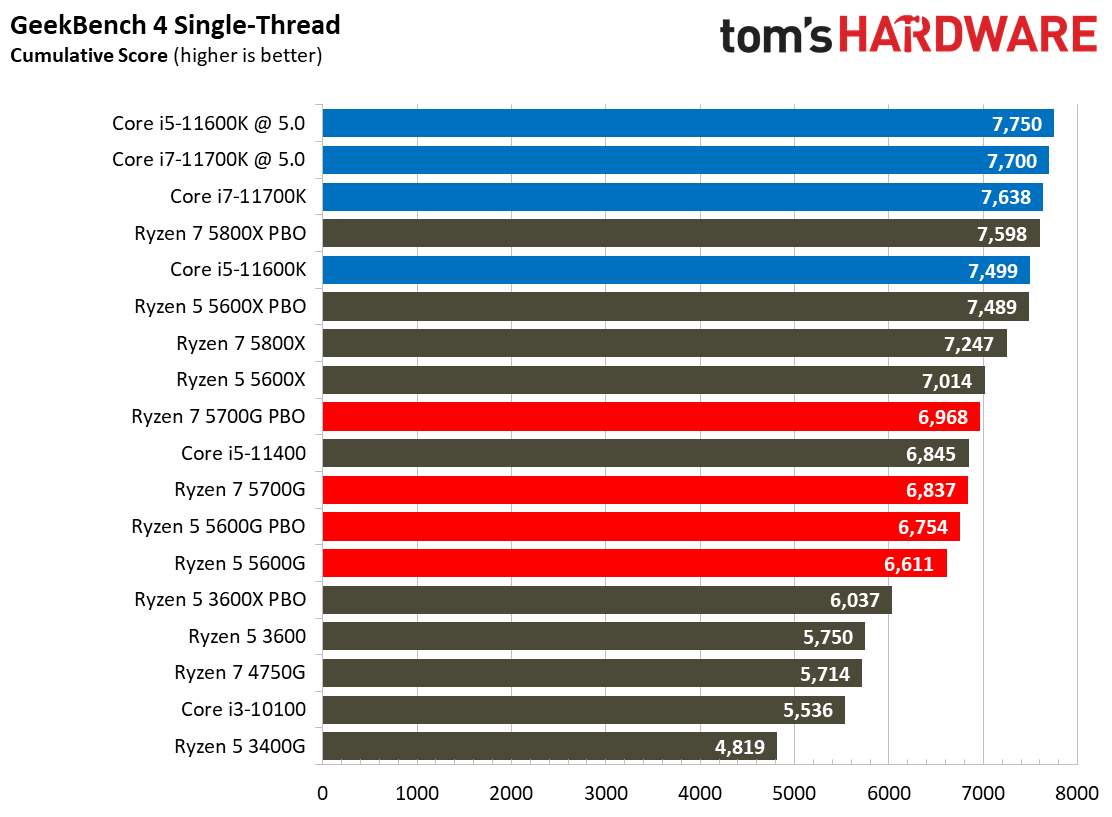

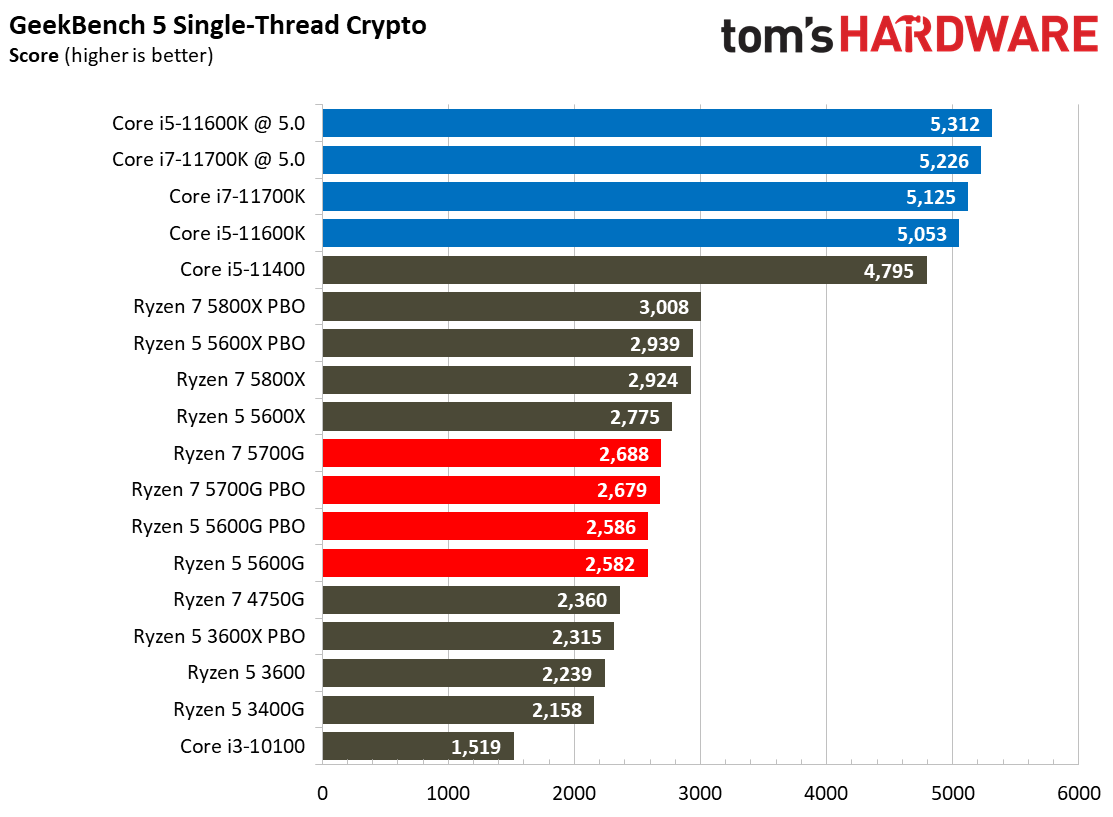

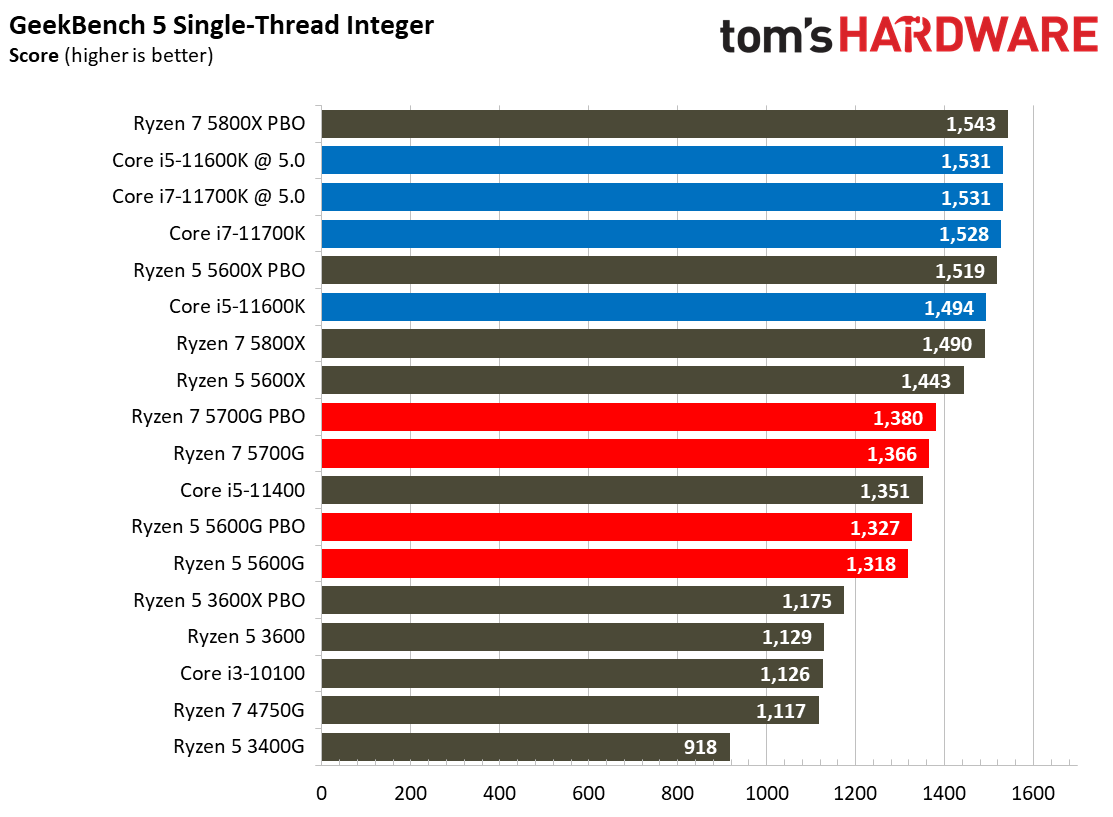



Frankly, most of these tests aren't terribly relevant to the target audience for this class of chip. They're more important for higher-end chips, but we include them for completeness. Nevertheless, the timed LLVM compilation workload, y-cruncher, and NAMD tests do a wonderful job of illustrating the architectural advances AMD has made as it progressed through the Zen+ 3400G and Zen 2 4750G to the Zen 3 APU era with Cezanne.
MORE: Best CPUs
MORE: CPU Benchmarks Hierarchy
MORE: All CPUs Content
Current page: AMD Ryzen 5 5600G Application Benchmarks
Prev Page AMD Ryzen 5 5600G Discrete GPU Gaming Performance Next Page Better than the Ryzen 7 5700G
Paul Alcorn is the Editor-in-Chief for Tom's Hardware US. He also writes news and reviews on CPUs, storage, and enterprise hardware.
-
hotaru251 i would personally add to the cons: VegaReply
the only problem with this chip is the vega graphics. if they had RDNA it would basically destroy Intel's lower cpu's in cost to performance.
pcie 3.0 isnt really a con at this type of chip. Its a budget chip. -
ndperson Actually it isn't Vega that is limiting their performance but their ddr4 ram. That is why they don't update beyond vega. Vega itself is limited by the speed of the ram so upgrading to rdna really wouldn't help muchReply -
twotwotwo Probably not a priority for Intel, but a TGL desktop chip (that non-OEMs can get) might make this segment more interesting, going by laptop benchmarks.Reply
That or desktop Van Gogh 🤣 but I imagine Valve has all those booked for a while. -
brodon Building an RGB matx non gaming system on a budget, and, not understanding, at 79, much of the language from the tech savvy contributors, I rely a lot on certain comments and reviews to make purchase decisions.Reply
This G series integrated graphic CPU, on a B450M DS3H v.2 mobo and Cooler Master G100M low profile cooler in a NXZT h501i case looks like a workable base configuration.
The rest of the components should be elementary. -
hrudy Most of you won't care about this issue . I was evaluating the AMD Ryzen5 5600G using an existing Linux Image based on Centos 7. I wanted to get away from Intel and try AMD. However, this processor consistently generated Panic Traps, both from the image and even from the Centos 7.9 install disk. I was using a GIGABYTE B550M DS3H . I have never seen an X86_64 part generate Linux Panic traps by just booting. Usually there are minor issues like not seeing the audio or ethernet components. And yes ithe Ryzen 5 5600G will boot from later kernels.Reply
And yes an AMD cpu without the GPU enabled works fine. I then ran into the second problem which is that even with a late Ubuntu distribution the AMD DRM gpu code didn't not want to install. I have never encountered this level of incompatibility since I've been using Linux which is around Y2k. Naturally AMD support doesn't care since it is Linux. For this level of incompatibility I might as well be running an ARM processor. -
tracker1 Replyhrudy said:... AMD support doesn't care since it is Linux. For this level of incompatibility I might as well be running an ARM processor.
It's definitely a mixed bag. I learned this using an RX 5700XT at release. I had to run beta/alpha kernels for the first 6 months or so.. Ubuntu 20.04 was really the first release with decent in the box support and even then better with later kernels. So it's not too surprising.
I also had similar issues with Intel AX wireless at that time (Around x570 Master, motherboard). And that doesn't even cover trying to get RGB in Linux working.
I've since gone back to solid, no window, case. I'm also now on an RTX 3080, as I'm running some video AI stuff that didn't do well with AMD at the time.
Nvidia drivers haven't been the best either. At least at this point it's mostly mature. Unfortunately, bleeding edge hardware and Linux means a bit of pain.
If suggest only running a very recent kernel in hardware released at least 4 months before your OS release. CentOS stable is not that. Should run a recent Fedora instead. I'm not that up on rpm distros, preferring Debian based myself. I know there are a couple newer white box RedHat options though. -
render1967 Hi, guys! I have a question. Help me, please! Does the built-in video in 5600G support analog signal via D-sub? I ask because I have a problem with this - there's no signal via D-sub. Computer configuration: CPU Ryzen 5 5600G, MB ASRock B450M Pro4-F R2.0, RAM ADATA XPG GAMMIX D10 16GB (2x8GB) DDR4 3000MHz, HDD ADATA Ultimate SSD SU650 120GB + Apacer AS2280P4 M.2 PCIe 512GB, PSU FORTRON HYPER K PRO 500W, monitor ASUS VH222SReply -
Girl_Downunder Replyhrudy said:Most of you won't care about this issue . I was evaluating the AMD Ryzen5 5600G using an existing Linux Image based on Centos 7. I wanted to get away from Intel and try AMD. However, this processor consistently generated Panic Traps, both from the image and even from the Centos 7.9 install disk. I was using a GIGABYTE B550M DS3H . I have never seen an X86_64 part generate Linux Panic traps by just booting. Usually there are minor issues like not seeing the audio or ethernet components. And yes ithe Ryzen 5 5600G will boot from later kernels.
And yes an AMD cpu without the GPU enabled works fine. I then ran into the second problem which is that even with a late Ubuntu distribution the AMD DRM gpu code didn't not want to install. I have never encountered this level of incompatibility since I've been using Linux which is around Y2k. Naturally AMD support doesn't care since it is Linux. For this level of incompatibility I might as well be running an ARM processor.
I wondered if you asked at the Ubuntu forums on this issue. I personally run Mint Mate on an old 4th gen i5 desktop. I'm looking to upgrade to "nearly" the newest (not worried about PCIe 4) and have been eyeing the 5600G due to price as well as preferring iGPU as a backup if dedicated fails. Reading this has me a bit worried. Runs off to the Mint forums to see what I find there!
